Marketers are navigating increasing complexity, fueled by rapidly evolving consumer and media behaviors, amidst a backdrop of global and macroeconomic uncertainty. This has made the marketing planning and budgeting processes even more challenging. How are leading marketers adapting, and what tools and approaches are they using to stay one step ahead of the competition?
Kantar and Google conducted joint research to better understand the budgeting and planning behaviors that enable business and marketing success during times of growing uncertainty. The research finds that leading marketers are adopting agile approaches in their marketing planning and media budgeting to improve the efficiency and effectiveness of their efforts.
What is agile? An agile organization is one that embraces agile principles and processes to rapidly adapt to both internal and external market changes. Traditional organizations that are more hierarchical and siloed in their decision making and operations often struggle to adapt and keep pace in a rapidly evolving marketplace. Agile organizations, on the other hand, embrace cross-functional collaboration and iterative and data-driven decision-making.
For this research, we surveyed 575 senior marketers across eight countries from March to June 2022 to learn more about their media budgeting and planning processes. To isolate the top performers, we defined “leading marketers” as those who not only outperformed peers in their industry, but also outperformed internal expectations, and reported revenue growth of 10% or more in the past year. With that criteria, leading marketers represented 35% of those senior marketers surveyed.
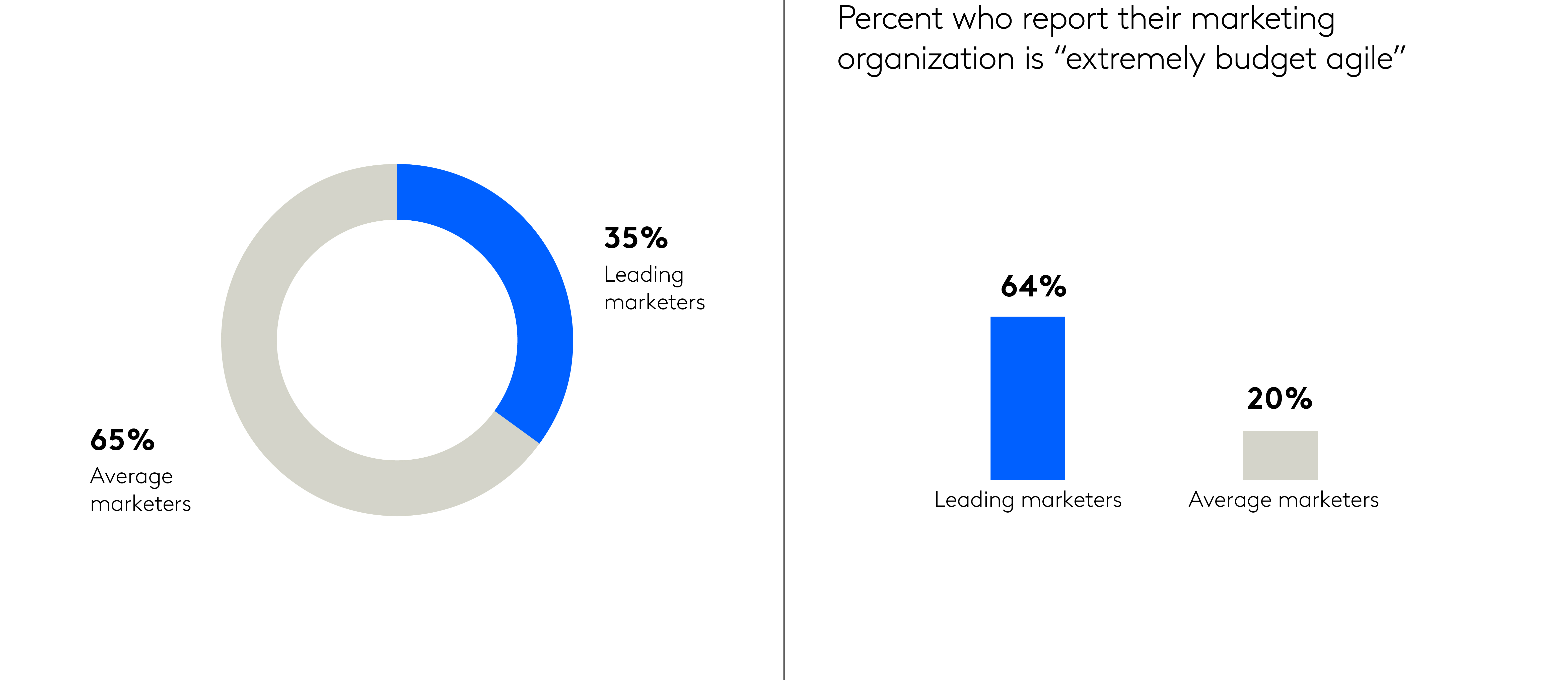
Leading marketers in our survey were three times as likely to report that their marketing departments were extremely budget agile when it came to digital marketing budgeting decisions. The research found seven strategies to improve agility.
1. Break down channel silos
Leading marketers are actively working to break down silos within their marketing organizations to facilitate more collaboration and integration across media channels. Organization silos (such as those that can arise when individual teams are dedicated to specific channels, objectives, etc.) make it difficult to shift budget from underperforming channels or campaigns to those performing more strongly, and as such, are a key barrier to achieving budget agility. Sixty-eight percent of leading marketers reported that their teams were tightly integrated across all channels, while only 13% of average marketers could say the same. Even still, 82% of leading marketers said that further improving collaboration across their marketing organization remains a top priority going forward.
What are marketing organizations doing to break down internal silos? While some have gone so far as to reorganize or change reporting lines to facilitate increased collaboration, our research found that more organizations were taking an incremental approach, for example creating more cross-channel touchpoints, both internally and across their agency partners. The cross-channel efforts include sharing KPIs across marketing channels and meetings, trainings, or social events with broader teams.
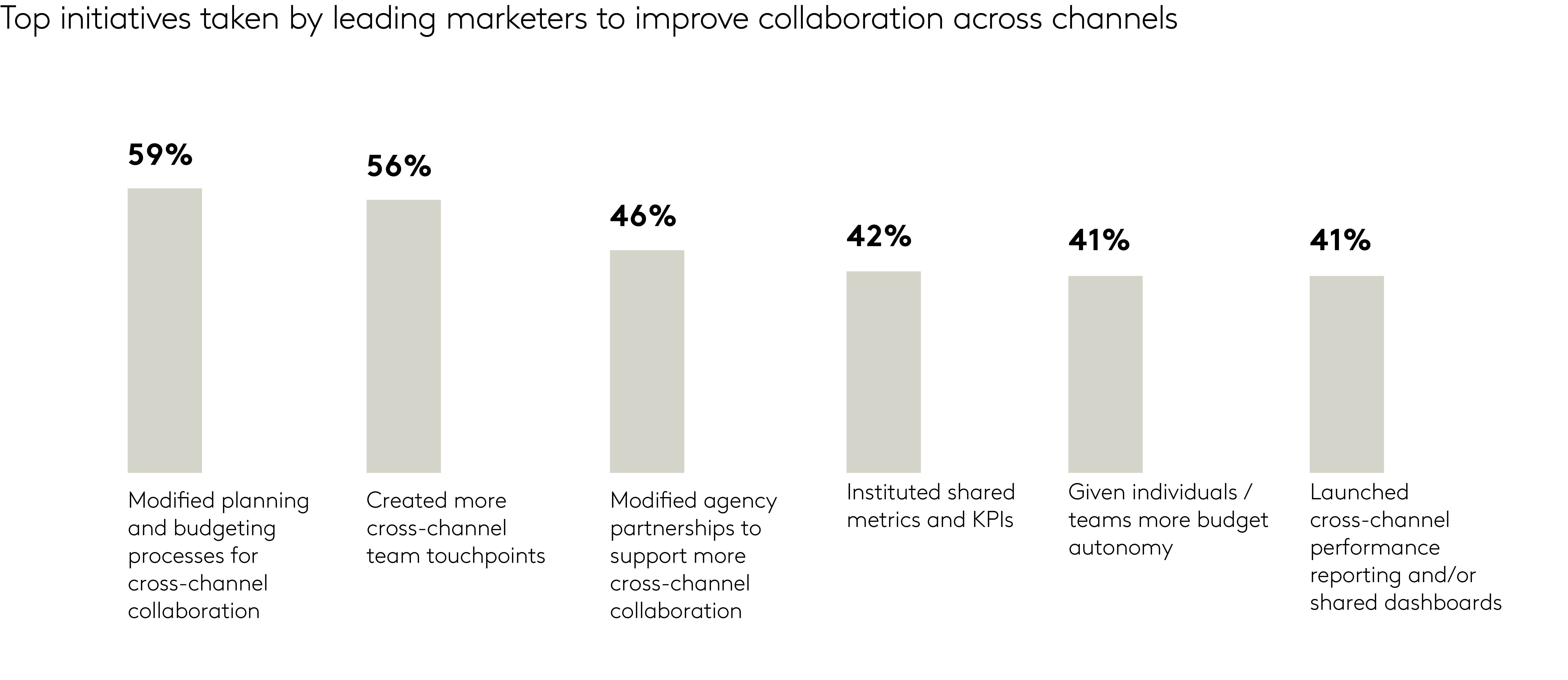
2. Plan but be ready to adjust
One might think that shifting to an agile approach means reducing the amount of formal planning, but the study showed that leading marketers were just as likely to engage in marketing planning as all other marketers. Moreover, when leading marketers engage in formal marketing planning, they tend to plan more granularly.
Nearly all marketers engage in formal marketing planning at least two to four times a year. Leading marketers, however, adjust budgets more frequently once a plan has been put in place, and typically adjust channel-specific budgets on a weekly or more frequent basis. Average marketers only revisit budgets monthly or less frequently and are slower to react to campaign performance dynamics.
Leading marketers also plan digital marketing allocations more granularly, breaking digital media budgets out by both media platform and ad format. More granular upfront planning enables more specific, measurable goal setting. These organizations ultimately pivot allocations based on performance against those goals.
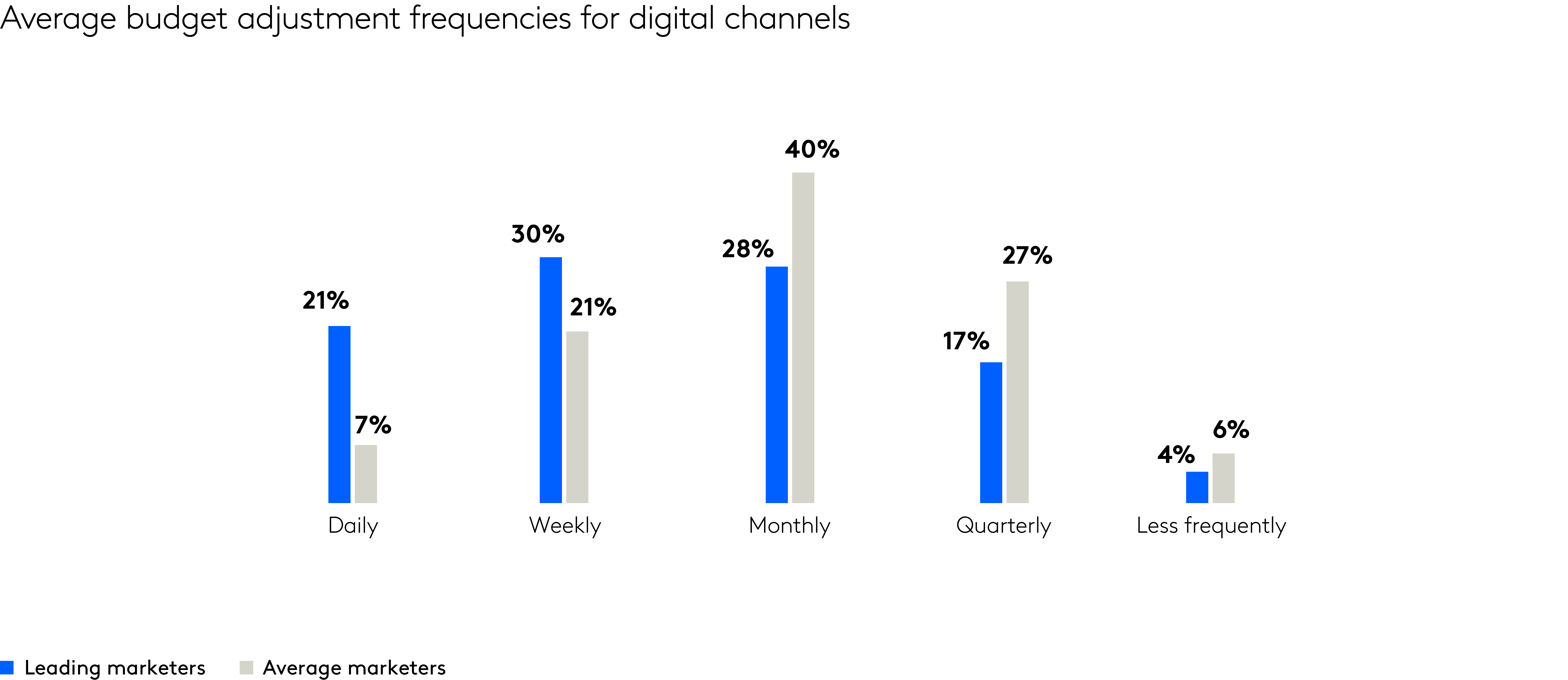
3. Cut the red tape
A key tenet of agile marketing is the reduction of inefficient and hierarchical decision making and acceleration of speed-to-market. Of the leading marketers surveyed, 73% said it is very easy to increase budgets for channels that outperform goals or expectations, while only 28% of average marketers can say the same. Additionally, leading marketers have a much easier time shifting budgets across channels to actively optimize campaign performance and capitalize on opportunities as they arise.
Within leading marketing organizations, junior team members also have a higher degree of influence and autonomy to adjust budget allocations. Even significant budget changes of 20% or more are typically approved within one week, while budget change approvals of the same magnitude often require multiple weeks at other organizations. By reducing chains of required approvals and trusting teams closer to the ongoing monitoring and management of campaigns, leading marketing organizations can move swiftly to optimize media budgets.
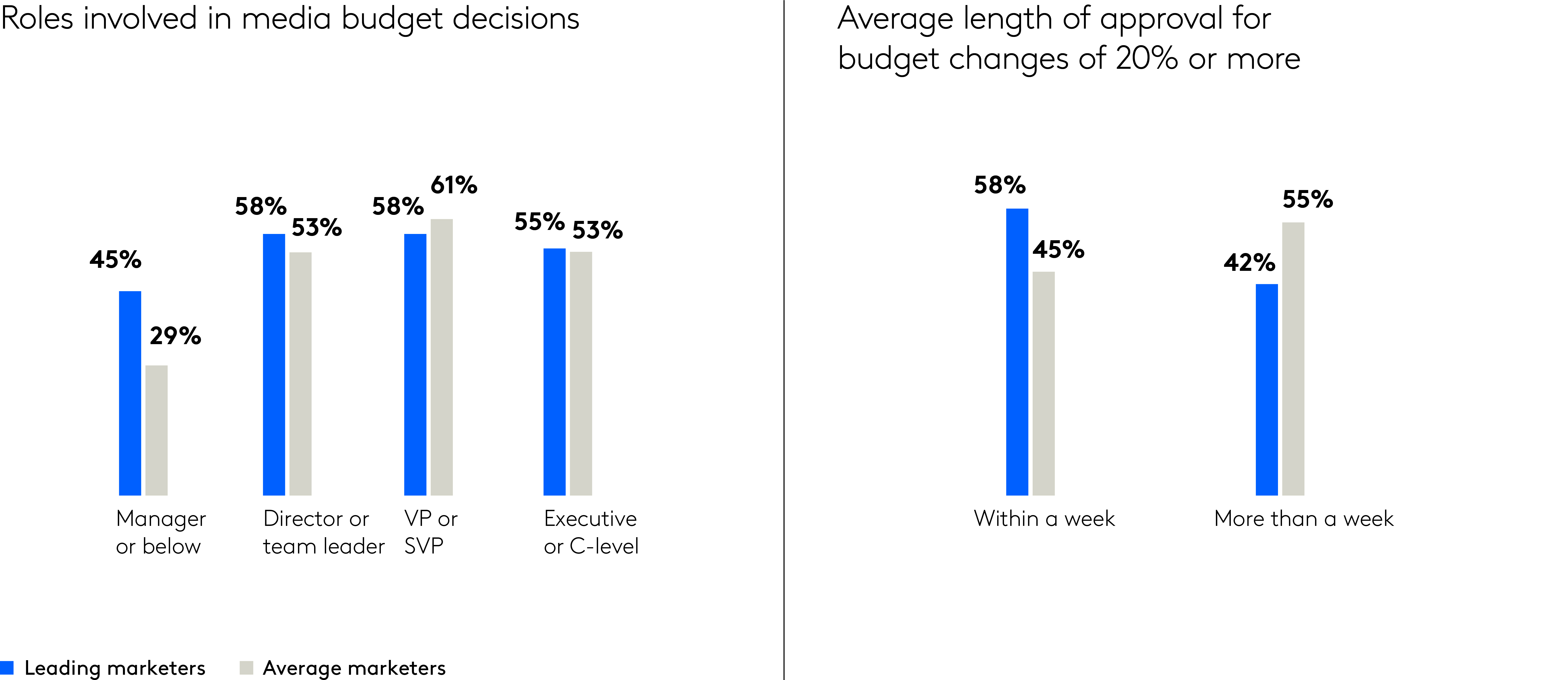
4. Test and learn
Leading marketers understand the importance of staying on the cutting edge of advertising and embrace experimentation as a way to vet and scale new approaches. Ninety percent of leading marketers set aside budget during planning for experimentation, compared with 67% of average marketers. As a result, leading marketers invest in experiments and test new approaches as they arise. They also scale the approaches that yield strong initial results; 56% of leading marketers say it is very easy to scale successful experiments, compared with only 12% of average marketers. Allocating budget and resources to experimentation during the marketing planning process greatly increases an organization’s ability to respond to new opportunities and thrive in a changing media landscape.
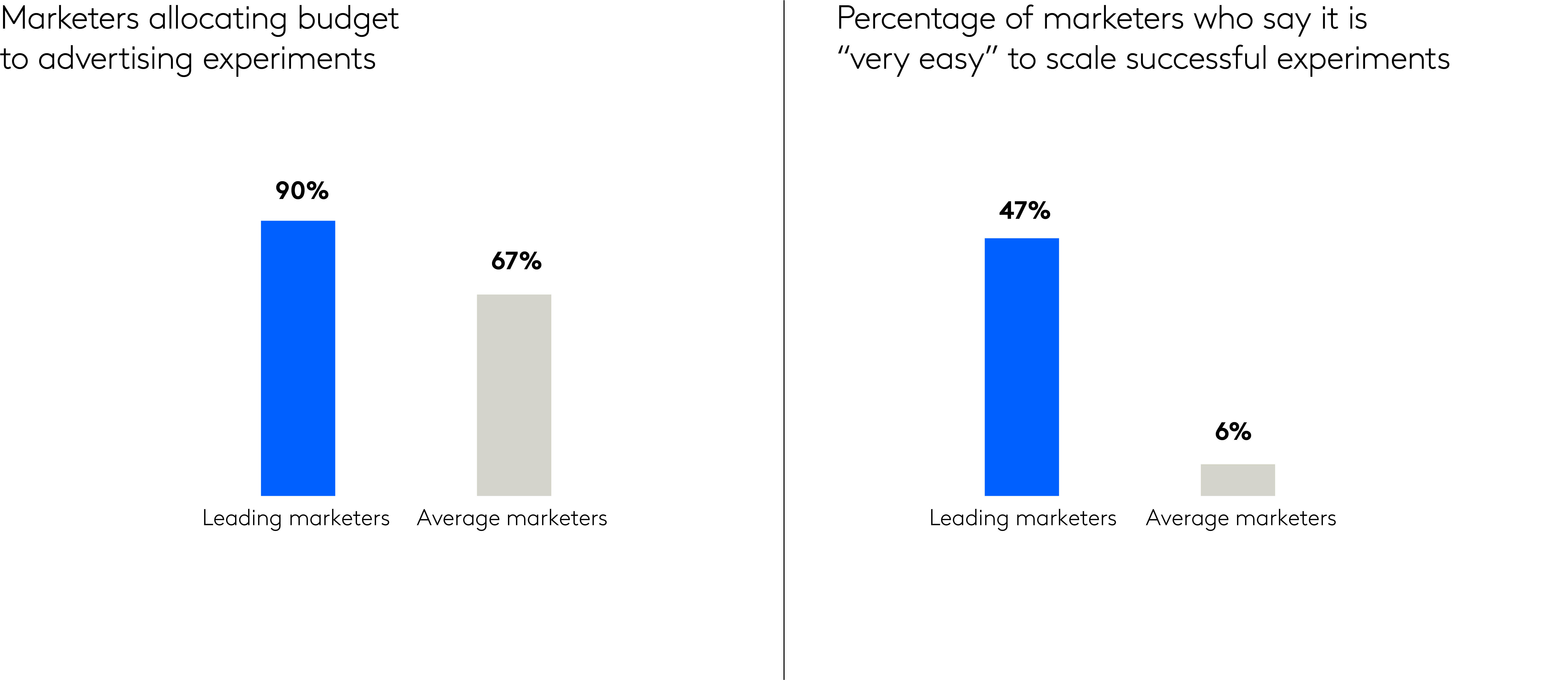
5. Partner with agencies on strategy rather than execution
While the research found that leading marketers are more likely to have developed in-house digital marketing capabilities, that doesn’t mean they are not reliant on agencies. Leading marketers actually reported working with more agencies, on average, than less successful marketers; however, how they engage with their agency partners differs. Leading marketers were more likely to engage their agency partners on overall marketing strategy, while average marketers were more likely to have their agencies focused on campaign execution alone. Indeed, earlier Kantar research on digital transformation also found that digital leaders were more likely to outsource or collaborate on the most complex challenges in order to free up internal resources. Given increasing complexity in marketing, the importance of maintaining a network of reliable partners to tackle tough challenges and stay on the cutting edge will likely grow.

6. Embrace automation
Another key tenet of agile is the ability to effectively use technology to improve collaboration and ROI, as well as to scale impact. Leading marketers embrace advertising automation tools to improve both efficiency and effectiveness, and those surveyed were more likely to utilize cross-channel automation that allows media budgets to automatically flow between channels in real time. By using cross-channel automation, marketers can capture the strongest performance opportunities and improve return on ad spend (ROAS). Having taken the necessary measures to better integrate and coordinate marketing planning and operations across channels makes it easier to adopt new approaches like cross-channel automation. Marketing automation also frees time for staff to focus on other priorities like collaborating with colleagues on strategy, testing new approaches or uncovering new customer insights.
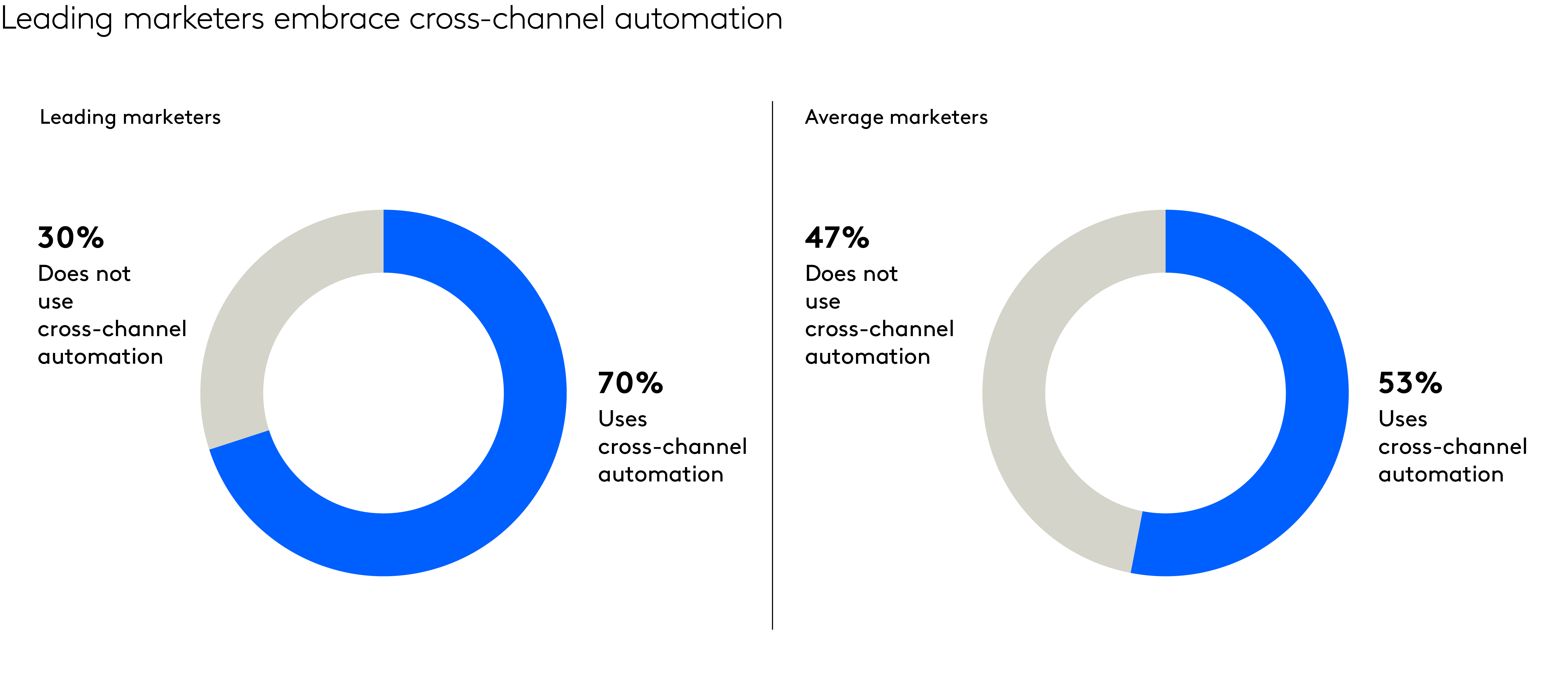
7. Adopt agile insights
While leading marketers are embracing agile practices, that doesn’t mean they are cutting corners and neglecting crucial insights work. Leading marketers were just as likely as all other marketers to leverage consumer insights, as well as advanced approaches like marketing mix modeling, to inform digital media budget decisions. What separates leading marketers is that they are more forward-looking and quicker to embrace new tools. Rather than relying mainly on historical performance data to inform digital media budget decisions, they are more likely to embrace agile approaches, like real-time forecasting tools and incrementality experiments.

Leading media and consumer research providers, like Kantar, are also embracing agile approaches and have developed a suite of on-demand solutions to support agile marketing teams. Kantar Marketplace includes agile creative testing and measurement solutions, such as Link and Link AI, that allow marketers to test ad creative in as little as 15 minutes. Kantar has also recently acquired Blackwood Seven, which operates a highly scalable, AI-powered, cookie-less unified marketing measurement technology. Their advanced analytics produce marketing ROI insights at a granular level enabling marketers to make highly accurate media reallocations in near real time.
The key to success
By taking any or all of these steps, decision makers in marketing organizations can make meaningful strides toward increased agility and adaptation to market velocity. Our research shows that taking an agile approach to marketing and budgeting can help elevate marketing performance. Marketers who eliminate silos within their organizations and allow employees to think and act cross-functionally make smarter decisions about media allocations and allow spend to flow where it will have the most impact. They reduce hierarchies and give teams and individuals more power to act in a data-driven manner. Campaign performance is monitored on a daily basis, and budget adjustments are made more frequently and with greater ease and speed.
Leading marketers see their agencies as partners more for strategy than execution – which they often handle in house – and leverage advertising automation tools to enable employees to focus on strategy and experimental approaches. Kantar tools and new techniques help marketers to adapt to volatile conditions as they execute smarter marketing campaigns in near real-time.


